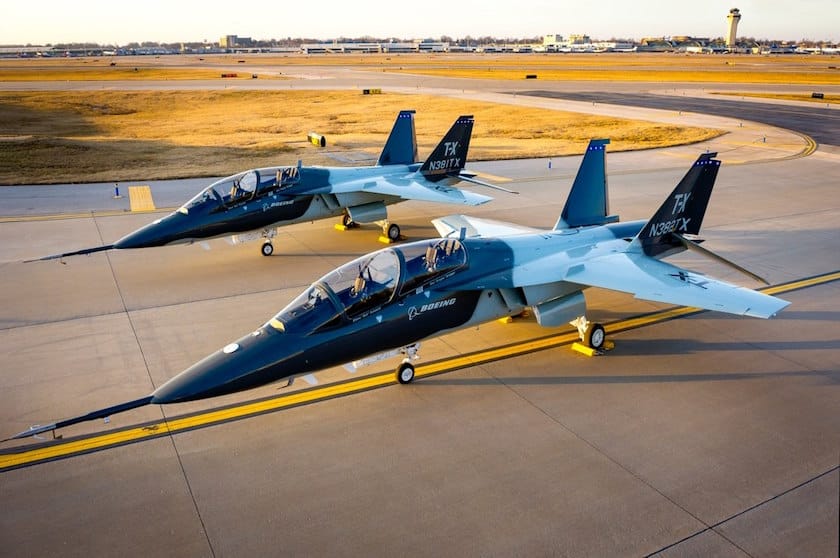After a fierce competition with Lockheed-Martin, Leonardo and Northrop-Grumman, the consortium formed by the American Boeing and the Swedish Saab succeeded, in 2018, in imposing itself for the replacement of advanced training aircraft. US Air Force T-38 Talon under the TX program. Both the program and its aircraft, the T-7A Redhawk, were to represent the quintessence of the doctrine actively advocated by the Trump administration's new chief of US Air Force acquisitions, Dr. Roper, by basing its design heavily on digital twin technology. Confidence in this approach was so great, both from the point of view of manufacturers and the military, that Boeing and Saab committed to a fixed envelope offer of $9,2 billion for 351 aircraft and 46 simulators, with a start of industrial production from 2023. Unfortunately for the two industrialists, certain problems have appeared, shattering the economic model targeted by Boeing.
Thus, in a June 2022 press release, the US Air Force reported several problems, encountered in particular during the ground tests of the first two prototypes, but also difficulties for the manufacturer and its subcontracting chain for correct them quickly. In addition, 3 aerodynamic problems causing in-flight instability had also been detected. But it was above all the fears about the functioning of the ejection and survival system of the crew that posed the biggest challenges to Boeing. Indeed, according to the tests and simulations carried out, the physical integrity of the pilots in the event of ejection was far from guaranteed, with significant risks of concussion when opening the parachute, while the visor of the helmet could not resist the relative wind following the ejection. This point was also identified as the most important risk by the Government Accountability Office, or GAO, the American equivalent of the Court of Auditors but with extended prerogatives, in its 2022 report.

These problems got the better of the initial schedule of 2018, which provided for the start of industrial production of the device for the beginning of 2023, and the first deliveries to the US Air Force for the end of the same year. Indeed, according to it, the T-7A Redhawk program is now expected to begin industrial production in 2025, to reach initial operational capability, allowing its use to train pilots and replace the T-38s, for 2027. By the way, Boeing had to announce that it had to take over, because of the fixed-value contract, not less than $1,1 billion in additional charges related to problems and postponements encountered. And if both the US Air Force and the aircraft manufacturer are full of praise for the digital design of combat aircraft, which has since become the cornerstone of all civil and military aeronautical programs, it is clear that the initial ambitions came up against certain realities marking the limits of this exercise.

75% of this article remains to read,
Subscribe to access it!
The Classic subscriptions provide access to
articles in their full version, and without advertising,
from 6,90 €.
Newsletter subscription
Register for the Meta-Defense Newsletter to receive the
latest fashion articles daily or weekly


[…] new compliance deadlines to meet the needs of the US Air Force, while the T-7A training aircraft saw its entry into service postponed by 2 years due to several development difficulties point, in particular concerning the evacuation system […]